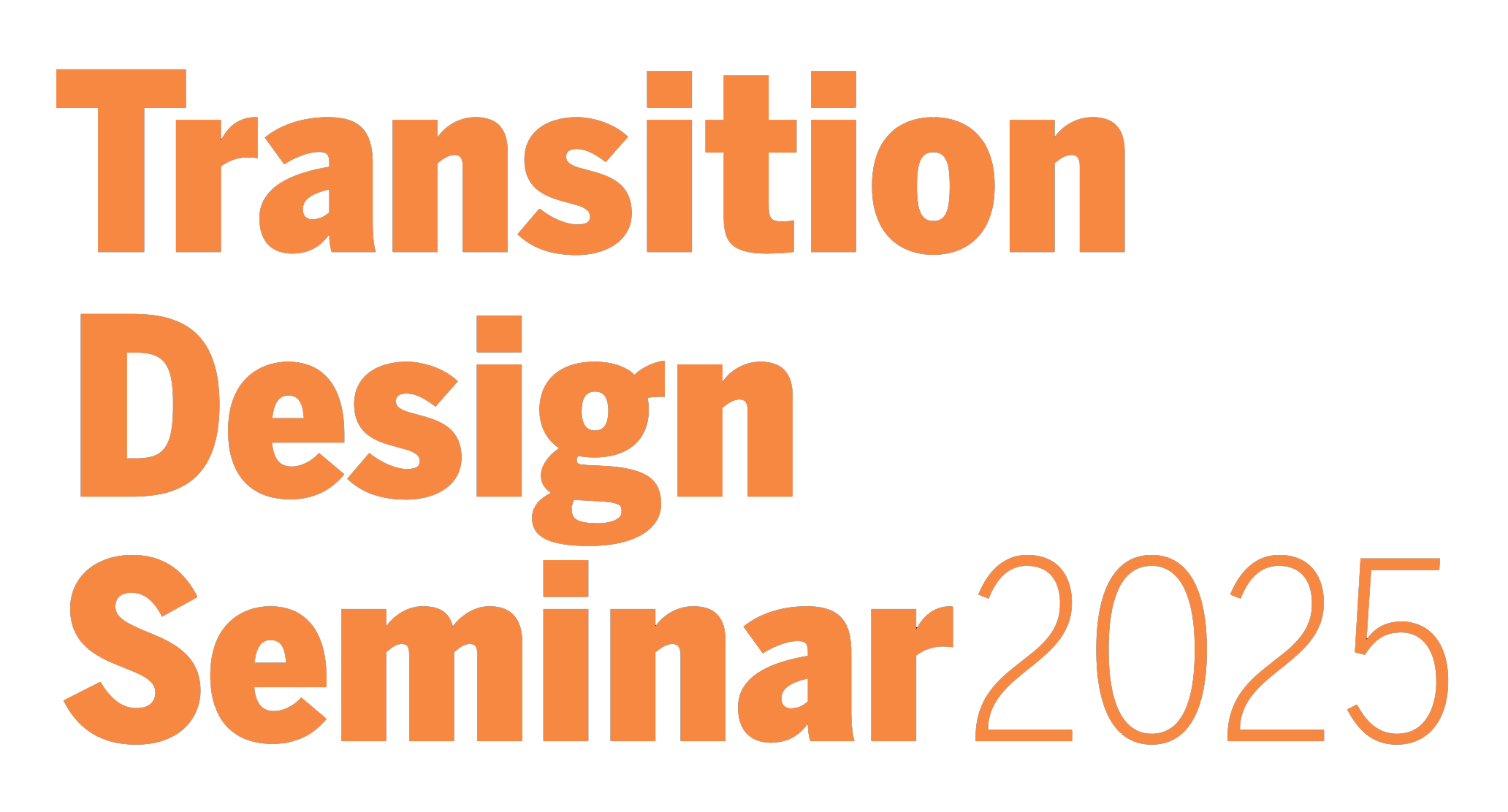The Transition Design Seminar introduces students to Transition Design, a transdisciplinary approach for addressing wicked problems and catalyzing transitions to more sustainable, equitable and desirable long-term futures. The course has both theoretical and applied components (see Course Overview & Structure for details):
APPLIED: 1) Mapping Wicked Problems; 2) Social Relations; 3) Mapping the Evolution of a Wicked Problem; 4) Designing for Transitions; 5) Designing Systems Interventions. These modules are based upon the 5 assignments that comprise the emerging Transition Design applied approach.
THEORETICAL: The 5, team-based projects are scaffolded by readings across a wide range of fields and disciplines that are situated within the 4 areas of the Transition Design Framework; 1) Visions for Transition; 2) Theories of Change; 3) Mindset & Posture; 4) New Ways of Designing.
In this class, instructors will provide an overview of the course modules, and explain how groups will undertake course readings and readings and assignments. Prior to class, each student will be assigned to a team with whom they will work with for the duration of the semester to undertake the 5 assignments and participate in the online discussions for assigned texts. At the end of the first class, students will meet briefly with their project team in Zoom breakout rooms and work in Miro to select a Pittsburgh-based wicked problem upon which the 5 assignments will be based.
The Transition Design seminar asks project teams to address a Pittsburgh-based wicked problem in 5 assignments, over the course of the semester. Many of these ‘wicked problems’ are common to most large cities in the world, however Transition Design argues that these problems are part of larger ‘problem clusters’ that always manifest in place and culture-specific ways. Problems at the level of a medium-sized city like Pittsburgh, or a neighborhood or region within a large megacity, can serve as a ‘window’ into a larger socio-technical system that needs to transition toward a more sustainable, equitable and desirable long-term future.
An increasingly high proportion of the world’s population now lives in cities that face countless wicked problems such as climate change, drought, obesity, poverty, racism, waste management, homelessness, crime and loss of biodiversity and of course, global pandemics such as COVID-19. At the level of the city, many of these problems form ‘problem clusters;’ multiple interrelated, interdependent problems which increase their intractability and resistance to resolution. But, conversely, cities are also often centers of innovation and are therefore well positioned to ignite systems-level change by disseminating and sharing innovations with one another. And the interdependency that keeps these problems stuck, can also be leveraged to solve multiple problems simultaneously if we strategically intervene. The 5 assignments will challenge teams to understand and address their wicked problem but also explore how the set of 6 problems in the class are connected to each other.
This website serves as the syllabus for this class. It contains the readings and instructions for the 5 assignments, so please review it thoroughly. Several days prior to each class, please review the corresponding page on this website to see what the assigned readings are, then go to the perusal platform to begin reviewing the text and engaging in an online discussion with your discussion group. Although the texts will be available via perusal, we suggest downloading them as well, to begin to build a Transition Design library. Each class has two categories of readings: Required and supplemental. In general you will be asked to read 1-2 texts, but PhD students and those interested in going deeper into the subject are encouraged to peruse/download supplemental readings as well.
We also recommend reading the following pages prior to the second class session:
Course Overview & Structure
Requirements and Grading
Course Calendar
Assignments
These readings give an overview of the field and if not read prior to this class should be read in the first two weeks of the semester
- Escobar, Arturo. 2017. Design for Transitions. In Designs for the Pluriverse. Duke University Press, Durham, N.C. pp.137-158
The following texts are recommended as good, broad introductions to many of themes and concepts that will be explored in the seminar:
